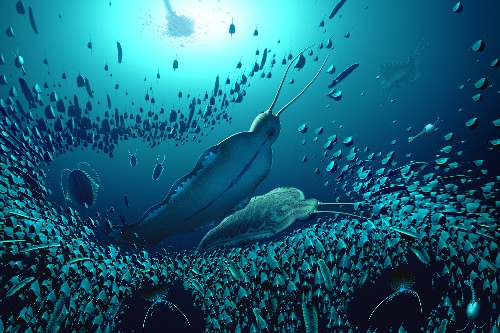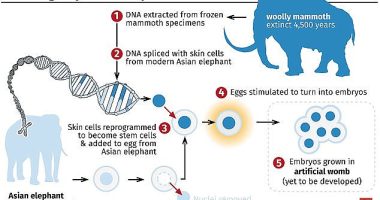FOSSILS of giant carnivorous worms have been unearthed in Greenland 518million years after they dominated the surrounding waters.
The new fossil animals have been named Timorebestia, meaning ‘terror beasts’ in Latin.
Researchers at the University of Bristol have revealed a past dynasty of predators in the Early Cambrian Sirius Passet fossil locality in North Greenland, that had gone undiscovered for millions of years.
The ancient creatures were once adorned with fins down the sides of their bodies, a distinct head with long antennae and massive jaw structures inside their mouth.
These giant worms would have grown to more than 30cm in length, and competed with sharks and seals during the Early Cambrian era.
They were some of the largest swimming animals at the time – but have evolved to a much ‘tamer’ size over the past 518 megaannums.
READ MORE ON ARCHAEOLOGY
“We have previously known that primitive arthropods were the dominant predators during the Cambrian, such as the bizarre-looking anomalocaridids,” Dr Jakob Vinther, a senior author on the study, said in a statement.
“However, Timorebestia is a distant, but close, relative of living arrow worms, or chaetognaths.
“These are much smaller ocean predators today that feed on tiny zooplankton.
“Our research shows that these ancient ocean ecosystems were fairly complex with a food chain that allowed for several tiers of predators.
Most read in Tech
“Timorebestia were giants of their day and would have been close to the top of the food chain.
“That makes it equivalent in importance to some of the top carnivores in modern oceans, such as sharks and seals back in the Cambrian period.”
The large worms feasted on swimming arthropod’s called Isoxys in “great quantities”, say researchers, having analysed the fossilised digestive system of a Timorebestia.
Other common fossilised animals from the Cambrian era include arrow worms, which date back to at least 538million years.
“Both arrow worms, and the more primitive Timorebestia, were swimming predators,” Dr Vinther explained.
“We can therefore surmise that in all likelihood they were the predators that dominated the oceans before arthropods took off.
“Perhaps they had a dynasty of about 10-15million years before they got superseded by other, and more successful, groups.”
Researchers say the discovery is significant to understanding where jawed predators came from – as well as how today’s arrow worms evolved.
“We are very excited to have discovered such unique predators in Sirius Passet,” added Tae Yoon Park from the Korean Polar Research Institute, senior author and field expedition leader.
Read more on The Sun
“Over a series of expeditions to the very remote Sirius Passet in the furthest reaches of North Greenland more than 82,5˚ north, we have collected a great diversity of exciting new organisms.
“We have many more exciting findings to share in the coming years that will help show how the earliest animal ecosystems looked like and evolved.”
Find out more about science
Want to know more about the weird and wonderful world of science? From the Moon to the human body, we have you covered…











